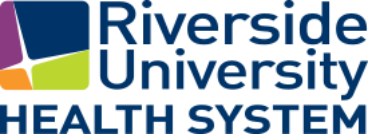Addressing overdoses is very complex because many underlying issues are associated with drug use. Effective overdose prevention requires a multi-disciplinary approach, strong and invested collaboration, data sharing, linkages to care, data-driven evidence-based practices, which includes youth and harm reduction education, and coordinating efforts to prevent new addictions, manage and treat existing addictions, and prevent overdose deaths.
Surveillance
- Monthly Surveillance Reports - RUHS - Public Health, REMSA, and the Sheriff-Coroner’s Bureau produce and disseminate an overdose morbidity and mortality monthly surveillance report to local and state partners increasing access to timely and actionable surveillance data.
- Overdose Outbreak Surveillance & Response Alert System - RUHS - Public Health, REMSA, and the Sheriff-Coroner’s Bureau is implementing an overdose outbreak alert system for detecting drug overdose outbreaks in less than 72 hours by rapidly analyzing REMSA, ESSENCE, and enhanced mortality surveillance data and alerting RUHS - Public Health leadership and partners to inform the public and mobilize resources.
- RODA Overdose Prevention Strategic Plan - The Overdose Strategic Plan is being developed with significant community/partner input. This plan will inform all substance use prevention activities within RUHS - Public Health and will inform the agency’s overall strategic plan.
- California’s first Overdose Fatality Review - The Overdose Fatality Review (OFR) team investigates the circumstances and events leading up to an individual’s death, particularly the systems that the individual came into contact with throughout their life, to identify system level and policy changes that will prevent future overdose deaths.
- Overdose Data Dashboard - The GIS-driven Overdose Data Dashboard (ODD) displays data on fatal overdoses, opioid-related emergency department visits, and opioid-related calls to poison control. Data displayed on maps are based on census tracts and interactive to allow the user to view more detail when a census tract is selected. Demographic data (when available) such as sex/gender, age, and race/ethnicity, are also displayed on the dashboard.
Linkage to Care
- Case management services provided by Public Health Nursing - participating partners refer eligible clients to the Public Health Nurse (PHN) for case management. The PHN assesses and works closely with case-managed clients to connect them with the services they need.
- Healthy Families America – RUHS- Public Health’s Maternal, Child, and Adolescent (MCAH) branch implements the Healthy Families America (HFA) program for pregnant or post-partum women who have a history and/or high risk of opioid/substance use disorder and/or mental health disorders. HFA is an evidenced-based case management program that is family-focused and provides wraparound services to the mother and family.
- Community Assessment and Transport Team (CATT) Program – Pairs a Licensed Clinical Therapist (RUHS – BH) with an EMT (AMR) to respond to people in crisis in a non-emergency vehicle in the City of Hemet. The goal is to better serve patients coping with behavioral health and substance use-related incidents through on-scene assessment and more appropriate resource referral, including transportation to mental health facilities, sobering centers, shelters, etc. Refer to their flyer for more information about the program.
Education and Harm Reduction
- Harm Reduction education and supplies - RODA partners (including but not limited to Inland Empire Harm Reduction, RUHS - BH, RUHS - PH) will support and implement bystander naloxone education for community members and partners who provide services to under-resourced populations. Specific populations include individuals who are formerly incarcerated, experiencing homelessness, and pregnant or postpartum women.
- Academic Detailing - Inland Empire Health Plan (IEHP) - Clinical Pharmacy Programs will use academic detailing while leveraging other techniques, including harm reduction, to increase the use of non-opioid medications, decrease high-risk opioid prescribing, and increase the number of X-waivers among clinicians.
- Overdose Awareness and Prevention Program (OAPP) – Implementation of a youth-based curriculum, risk-screening, and referral process for overdose prevention in middle and high schools in Riverside County. At-risk students are referred to Behavioral Health Specialists or counselors on campus.
- EMS Naloxone Leave Behind Program - Implemented by Riverside Emergency Medical Services Agency (EMS), EMS provides individuals and/or families of individuals who experienced an overdose with Naloxone, education on how to recognize and respond to an overdose using Naloxone, and harm reduction resources.
Partners and Collaborations
- California Department of Public Health
- Desert Healthcare
- El Sol Neighborhood
- End Overdose Inc.
- Inland Empire Harm Reduction (IEHR)
- Inland Empire Health Plan (IEHP)
- Inland Empire Opioid Crisis Coalition (IEOCC)
- Joint Regional Intelligence Center/Los Angeles High Intensity Drug Trafficking Areas
- Rainbow Pride Youth Alliance (RPYA)
- Riverside County Emergency Medical Services
- Riverside County Sheriff-Coroner’s Office
- RUHS- Behavioral Health
- Starting Over Inc.
- Visión y Compromiso

